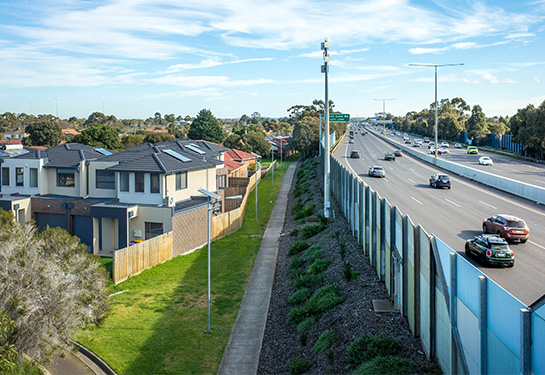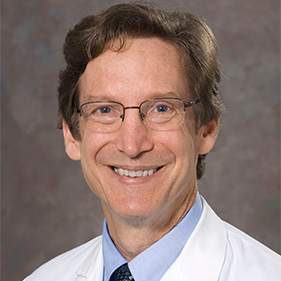New report highlights impact of roadway air pollution on indoor air quality
Evidence shows that people who live near busy streets and freeways have an increased risk of multiple health conditions
People who live near major roadways in California continue to be at risk of developing respiratory, cardiovascular and reproductive health problems, despite the state’s push for clean energy policies, UC Davis Health researchers told the state Legislature in a new report.
The report was prepared by the California State Policy Evidence Consortium (CalSPEC), which is headed by UC Davis Health clinicians and staff, and comprised of researchers from throughout the University California. It was commissioned by the California Senate Environmental Quality Committee and California Assembly Natural Resources Committee, which are studying the health effects of near-roadway indoor air pollution and strategies to deal with it.
“Despite California’s progress in reducing air pollution over the last few decades, concern about the health effects of near-roadway air pollution remain,” said Richard Kravitz, co-director of CalSPEC and distinguished professor of Internal Medicine at UC Davis Health. “This report seeks to inform discussions at the California state level and also help other jurisdictions in and outside of California about effective mitigation strategies that can protect the health of individuals living near major roadways and other transportation hubs.”
This report seeks to inform discussions at the California state level and also help other jurisdictions in and outside of California about effective mitigation strategies that can protect the health of individuals living near major roadways and other transportation hubs.” —Richard Kravitz
CalSPEC gathers experts from across the University of California system to address a range of policy questions of interest to the state Legislature through non-partisan, evidence-driven reports. University of California experts from Lawrence Berkeley National Laboratory, UCLA and UCSF contributed to the report.
The CalSPEC research team’s report gives context to the composition and prevalence of roadway pollutants in indoor environments and uses a systematic review methodology to ascertain the health effects associated with near-roadway air pollution (NRAP). It concludes with an evaluation of mitigation strategies — such as improved indoor ventilation — that policymakers may consider to reduce or prevent adverse health outcomes.
According to the federal Environmental Protection Agency, NRAP is defined as occurring within about 500 to 600 feet downwind from the vicinity of heavily traveled roadways (more than 100,000 vehicles per day in urban areas) or along corridors with significant trucking traffic or rail activities.
Vehicles produce traffic-related air pollution from tailpipes; brake, tire, and road wear; and resuspended roadway dust. As a result, ultrafine particles, nitrogen oxides, carbon monoxide, volatile organic compounds, and brake, tire and road wear particles are pollutants commonly elevated in near-roadway environments.
“It is challenging to generalize the proportion of indoor pollution that originates from outdoors because it depends on so many factors, including the type of pollutant, the natural and built environment, and time of day,” said Suzanne Paulson, professor of Atmospheric and Oceanic Science at UC Los Angeles. “Based on existing evidence, we estimate outdoor sources are responsible for approximately 30-90% of the pollutant concentration indoors.”
The report’s findings indicate that exposure to NRAP increases the risk of multiple health conditions. The report also notes that poorer, urban neighborhoods often have higher exposures to roadway pollutants than other neighborhoods.
“There is well established evidence that traffic density and proximity to busy roads increases the risk of cardiovascular, respiratory, reproductive, and endocrine conditions, as well as all-cause mortality,” said Tracey Woodruff, director of the UCSF Program on Reproductive Health and the Environment (PRHE). Woodruff also stated that “People of color, those experiencing linguistic isolation and those uninsured are most likely to experience higher traffic pollution in California. Thus, NRAP is an environmental justice concern due to inequitable distribution of exposures.”
Woodruff also stated that, “People of color, those experiencing linguistic isolation and those uninsured are most likely to experience higher traffic pollution in California. Thus, NRAP is an environmental justice concern due to inequitable distribution of exposures.”
Evidence varies regarding the success of mitigation strategies with the most promising approaches focusing on tightened fuel and emission standards, use of obstacles that block or inhibit pollution movement and indoor filtration systems.
“Implementing mitigation strategies with the strongest evidence of effectiveness is especially important as urban infill projects are taking off around California,” noted Ling Jin, research scientist at Lawrence Berkely National Laboratory. “There is a lot of opportunity for infill in areas closest to highly trafficked roadways, so incorporating near-roadway pollution control and indoor filtration as part of the infill plan is important, especially when considering health equity.”
About CalSPEC
In alignment with the UC mission, CalSPEC leverages UC expertise in public service and research to support evidence-based policymaking at the state level. Specifically, CalSPEC seeks to build an evidence pipeline to the State Legislature that enhances policy decision-making through rapid evidence and policy reviews on complex topics of concern or interest to the State Legislature.


